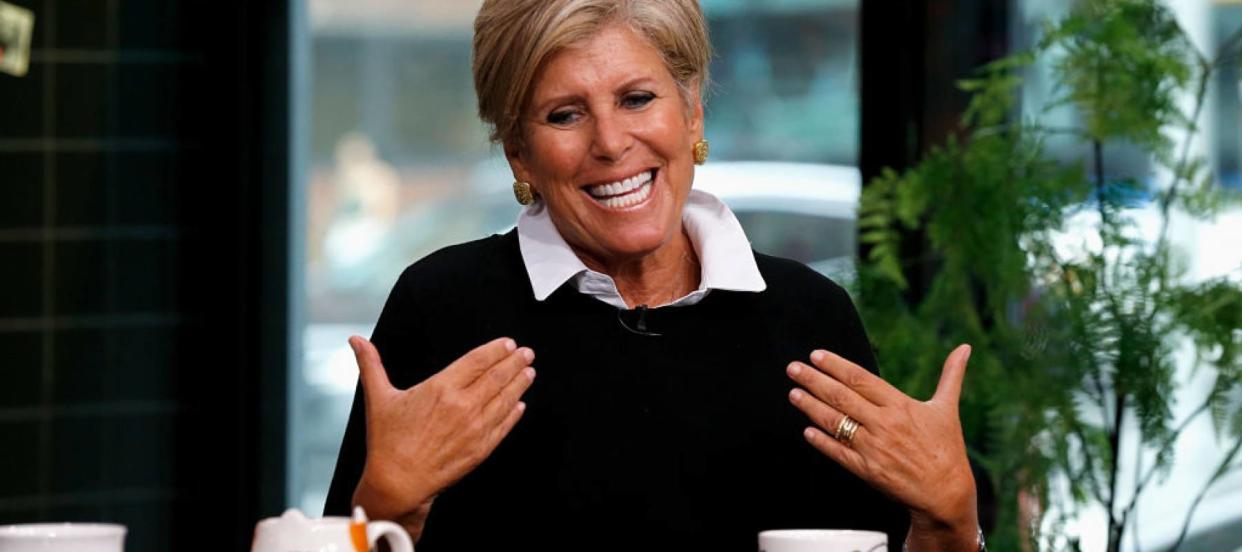Nearly two-thirds of millennials say spending $7 every day on coffee brings them ‘joy’ — but Suze Orman says she'd 'drop dead' before buying her brew to-go. Who’s right?

Let's face it — few things in life are as pleasurable as starting the day by grabbing a to-go cup of expertly brewed coffee from your local barista and taking that precious first early-morning sip.
So pleasurable is the feeling that it turns out about 6 in 10 millennials are willing to cough up $7 on a coffee each day because of the joy it brings them, according to a survey from financial services company Empower.
Don’t miss
Take control of your finances in 2024: 5 money moves to start the new year off strong
Robert Kiyosaki warns: ‘Cash is trash’ — Discover the power of diversifying with gold now
She bought an ‘unlivable’ house for $16,500 and made it her dream home — but you can reap the rewards of today’s expensive housing market without all the heavy lifting
Financial-advice purveyors have long blasted the takeout coffee habit for holding Americans back, including straight-shooter Suze Orman, who made it clear where she stands in a recent interview with The Wall Street Journal.
“I would drop dead before I bought a coffee,” Orman proclaimed, noting that she favors the Cafe Bustelo brand when she prepares her brew at home. “I do one cup a day and that’s it.”
What Orman wants you to do with your cappuccino capital
Orman, who often stresses the importance of emergency savings and taking charge of your finances, thinks Americans need to prioritize the necessities.
“The question is, when do you buy what you can afford versus what you need when you can afford more than what you need?” Orman says, recalling when she purchased a $250,000 apartment in New York City even though she could afford a $1 or $2 million penthouse at the time.
In an older interview with CNBC Make It back in 2019, she explains what she’d prefer Americans do with their money.
“If you just simply used your money to purchase needs versus wants, you would find the money to invest in your retirement accounts,” Orman says. “You would find the money to get yourself out of credit card debt.”
Although Orman’s advice might be from the vault, it remains as relevant now as it did four years ago. The personal savings rate in the U.S. has not only plunged far below its 2020 peak, it’s also about half what it was in 2019. In the meanwhile, inflation has only pushed prices higher than they were in the past few years, meaning consumers are likely paying more for their coffee today.
American credit card debt just hit a new record last quarter, topping $1 trillion, according to the New York Fed. Now, if you’re racking up debt in the midst of inflation and high interest rates, you might want to focus on paying down your monthly balances instead of buying that $7 latte — or, look for other ways to reduce your spending.
It’s also key to start investing for your retirement as early as possible, since with compound interest, you can boost your returns over time.
“Let’s say you’re 25 and you put $100 a month into a Standard & Poor’s 500 index fund through a Roth IRA every single month for 12 months, every year, until you are 65. It’s very probable that you will average a 12% annual rate of return over 40 years,” Orman told The Wall Street Journal.
“At the end of those years, you have a million dollars.”
Read more: Retire richer — why people who work with a financial advisor retire with an extra $1.3 million
How to find the right balance
But that doesn’t mean you have to live a meager existence. Other money mavens, like Ramit Sethi for example, don’t believe in forgoing the little things that bring you joy.
Sethi says you should instead strive for balance and conscious spending, especially if you’re already hitting your financial goals.
If that coffee’s really important to you, look into other cost-cutting measures, like canceling that streaming subscription you no longer use, or making (and sticking to) a solid budget. Consider trying out the cash stuffing method, where you take your monthly paycheck in cash and divide it into envelopes labeled based on your spending categories (like your caffeine addiction) and your savings funds.
Plus, after you purchase your choice of brew, you can put the spare change toward your investments.
Just make sure that you’re still paying your bills in full and on time each month. If you’ve gotten behind on a few of your balances, try the avalanche method, and start with the debt with the highest interest rate. Alternatively, you can roll all your debts together into a consolidated loan at a lower interest rate, so you have just one bill to keep track of each month.
What to read next
Thanks to Jeff Bezos, you can now cash in on prime real estate — without the headache of being a landlord. Here's how
Find out how to save up to $820 annually on car insurance and get the best rates possible
Millions of Americans are in massive debt in the face of rising rates. Here's how to take a break from debt this month
This article provides information only and should not be construed as advice. It is provided without warranty of any kind.
